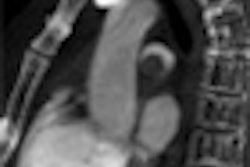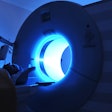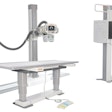Patients in their 80s can tolerate percutaneous cholecystostomy, with or without subsequent surgery or related procedures, just as well as younger patients, according to a new report from the University of California, San Francisco (UCSF) and the San Francisco Veterans Affairs (VA) Medical Center.
Dr. Adam Farkas, an interventional radiology fellow at UCSF, presented results at last month's Society of Interventional Radiology (SIR) meeting that generally indicate that octogenarians -- even critically ill ones -- can tolerate minimally invasive procedures to treat acute cholecystitis.
Procedure-related mortality rates for the 80-years-and-older age group are similar to those of somewhat younger patients, he noted.
Farkas' observations were based on a retrospective review of electronic medical records covering 10 years of clinical experience at UCSF and the San Francisco VA Medical Center. The review identified 42 patients (37 men, five women) older than 80 (mean age, 86.5) who had received percutaneous cholecystostomy for acute cholecystitis. Thirty-four had calculous cholecystitis, and the remainder had acalculous cholecystitis. The group was monitored for an average of 262 days.
Medical imaging confirmed the presence of acute cholecystitis before percutaneous cholecystostomy tube placements. The placements were performed for the diagnosis of acalculous cholecystitis or when the risks of surgery were deemed prohibitive, Farkas said.
Twelve patients (29% of the total), all with calculous cholecystitis, underwent surgical cholecystectomy after tube placement. Eight patients, including six with calculous disease, had their cholecystostomy tubes removed without surgical cholecystectomy. All of these patients had their cystic ducts confirmed as patent before tube removal. Because of short follow-up, no patient presented with recurrent disease.
In the 80-years-and-older group, 14% of patients died within 30 days of tube placement. "This is on par with younger cohorts," Farkas said. "An analysis of several published studies all involving younger patients found a 30-day mortality rate of 15%."
The death rate was substantially higher for older patients who underwent surgical cholecystectomy, however.
"You may say such patients are getting percutaneous cholecystostomy tubes because they are part of a generally sicker population," he said. "That is certainly a valid point, but the burden is on us to prove that cholecystostomy tubes are as safe as surgery."
In general, some trends from the study suggest the medical staff at the two facilities treat the older patients more conservatively. The patients in their 80s were less likely than patients in younger cohorts to undergo cholecystectomy after the percutaneous procedure. Twenty-nine percent of the octogenarians had their gall bladders removed after percutaneous cholecystostomy, compared with 40% of younger patients.
More research is needed to determine if percutaneous cholecystostomy can serve as definitive treatment, and if the tubes can be safely removed without further surgical interventions, Farkas said.
"Percutaneous cholecystostomy, with or without subsequent surgery, remains a safe and effective option for the treatment of acute cholecystitis in critically ill patients over the age of 80," Farkas concluded. "But I think at this point we have insufficient data to recommend it as a first-line treatment for acute cholecystitis."



















